Dioecy is said to be the trait of the species that shall mean anything that is an distinct animal which can make female or male gametes.
They can be either be from the plants having seeds or from the ones having animals. Dioecy is the other name for the dioecious plants and the dioecious plant example are-
The reproduction that the dioecious plant example offers are said to be the bi-parental type of reproduction. It has its cost, that only is about half its population and then directly passes to make its progeny. It helps in promoting of the method called to be allogamy or commonly said to be outcrossing and also excludes self-fertilization and thus it tends to get the trait of the mutation for recessive dioecious plant example reduced up.
The dioecious plant example seems to have quite a few of the methods to be prevented and then helps in self-fertilization and it thus includes the methods like self-incompatibility, the dichogamy and also herkogamy. They are said to be dimorphic system of reproduction and also along this it has androdioecy and also gynodioecy. The dioecious plant example shall be kept opposed to the rest like the hermaphroditic ones.
The plants in the lands are said to differ from the animals in the life path and then involves the generation to get altered. In the animals, the individual makes a gamete that is haploid and is one of its kind being wither a cell for egg or a sperm. There is a making of a zygote that shall help in getting the egg fused and makes a new organism. Yet here there is also an exception along with dioecious plant example.
The generation of the sporophyte has many individuals that shall make the spores haploid in nature and rather shall be also making same type of gametes. The spores do not show any tendency of fusion yet they do germinate by getting itself divided on repeat basis by mitosis and shall make many individual being haploid making more gametes that shall fuse to make a sporophyte that is diploid.
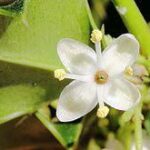
Out of all the plants, dioecious plant example can be 65% of all the gymnosperm and thus all the conifers shall be almost monoecious. In these types. The system of reproduction being monoecy and dioecy shall be much strong with the mode of having its pollen dispersed and thus the monoecious species shall be much anemophily and also some dioecious plant example can be zoophily.
The dioecious plant example is said to be made from the monecious or the hermaphroditic ones that shall be much untested at the time of getting the hypothesis tested in order to have its breeding escaped. The dioecious plant example does show link for the diversity in genetic and also having a good protection for the mutations that are deleterious. The dioecious plant example has developed sue to less sterility of the female or the males.
Ginkgos
They are said to be the large tree having leaves concerning the shape of the fan. The leaves shall be said to be connected with the supplements and are taken from mouth for having problems concerned with memory. This dioecious plant example is the oldest of all the living trees.
On being the oldest, it dates back to about 200 million years ago and is thus a dioecious plant example. They are said to be the flavonoids and are also one of the best antioxidant qualities and are also the terpenoids that shall help in having the blood circulation dilated on the vessels and then reduces the platelets stickiness. This plant is said to be native to the Korea, China or Japan and also Europe.
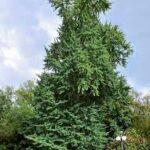
It is of much effectiveness being of sue in time of anxiety while consumes in less amount. It helps in treating of Alzheimer disease which links with dementia. Taking of this in a considered dosage helps in preventing of many development of dementia and also shall get worse. It helps with treating of ways having problems with hearing and clear the tract with having oral ginkgo in hand. It is good for schizophrenia and also can prevent stroke.
Cannabis
It is a flowering plant and this family is called to be the Cannabaceae with having disputed number of genus.
This dioecious plant example has three of its stages linked to it being the Cannabis sativa, Cannabis indica, and Cannabis ruderalis and can be treated to be under a single species. It can be accepted to be a species that is also undivided.
The genus is also widely accepted and originates from Asia. This dioecious plant example is also called to be hemp and this term is lined with the reference for many types of Cannabis that has been cultivate for several purpose. They are used for making fiber, oils, as juice or vegetables and also for the sue in medicines. The help in industries are made from these plants and are selected to make fiber. It is said to be an annual plant and also a flowering one.

The first pair of it has leaves that shall be mostly single and shall be having a gradual increase in the maximum number of leaflets considering a single one and is based on several conditions for growing and variety. At the flowering plant at its top, the number shall again have its diminishing to having a single leaf. The leaf in its lower area bears an arrangement that is opposite to the one in its upper region.
Marchantia
Marchantia is a genus of liverworts in the family Marchantiaceae and the order Marchantiales. It is a good dioecious plant example.
The plant body is thalloid. The thallus is dorsiventral, flat and dichotomously branched. The gametophyte is the dominant phase of plant life. The dorsal surface contains diamond-shaped markings, which has central pore in the middle for gaseous exchange.
The thallus of Marchantia shows differentiation into two layers: an upper photosynthetic layer with a well-defined upper epidermis with pores and a lower storage layer. The Marchantia thallus or the plant body is a flattened strap-like structure, 325 -925 µm thick, divided into three layers: the upper layer with pores under a lens it can be seen to be dotted with closely crowded, whitish pores with smooth, somewhat glossy surface, the middle layer with air pockets and chloroplast. Bryophytes are called amphibians of the plant kingdom because these plants though live in soil but they need water for sexual reproduction
Marchantia, genus of liverworts creeping ribbonlike plants in the order Marchantiales, commonly found on moist clay or silty soils, especially on recently burned land throughout the Northern Hemisphere. Marchantia polymorpha grows on shaded moist soil and rocks in damp habitats such as the banks of streams and pools, bogs, fens and dune slacks. Marchantia is a Bryophyte. These are simple plants without roots or vascular systems. Marchantia polymorpha, a well-known species, often is discussed as a representative liverwort.
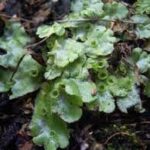
Date palm
They are much dioecious plant example and is also a plant that grows flower and shall be cultivated for having its fruit being edited as dates.
This dioecious plant example has about 12 to 19 species in it and have a height of about 100 feet and shall grow making clumps with many stems from a root system that is single. It shows slow growth and can reach a life of about 100 years if taken good care.
Date fruits are mostly oval and also cylindrical that are 1 to 3 inches in length and shall be about 1 inch in its diameter. The color of this dioecious plant example shall be varying from red to yellow and is always bright and much based on its variety. It has about 61 to 68 sugar percentage by its mass after getting it dried and are mostly much swear and thus can also be enjoyed as desserts on its own without sides. It is mostly seen in the middle East and the Indus.
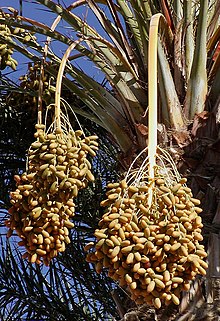
This dioecious plant example has its proof of growing in the history in the 6th millennium BCE. The total world production of it annually is about 8.5 million and also is seen in the North and also are the greatest producers and consumers of certain area. It has its name form the Greek word and the fruit it bears is called the date. This dioecious plant example Is much uncertain cause it takes long to cultivate. The leaves are about 4 to 6 meters and the spine are on the petiole. It is a good dioecious plant example having different male and female part.
African teak
It is seen in the several areas of the African part and can be used for many usage and is native to the North Kalahari.
It is also called to be the Iroko and is seen mostly in the Ivory Coast to the lands of Ethiopia and also in the Angola south and the Mozambique. This dioecious plant example is also called afrormosia in the west of Africa and is a same as the other teak.

It is a towering plant and is much in demand, they have different names and have a height of about 160 feet being bole, cylindrical and having branches that are 80 feet. It is wither yellow, brown, green in its bark and have grains that are straight and can be interlocked. It has its odor and can be worked upon. It is about 50 meters in its height. Logs are the common stuff made out of it. As a result, exploitation has become unsustainable and the species’ distribution has declined.
Timber from this tree is used for boat building, joinery, flooring and decorative veneers. Although it is endangered, African teak is still considered a better alternative to other threatened teaks within the timber industry. Since 1948, trade in the species has soared. African teak grows to a prodigious 50 m with buttresses up to 3 m high to keep the tree propped up. The trunk has no foliage for the first 25 m to 30 m. Pericopsis elata is only found in the drier parts of semi-deciduous forests in Central and West Africa, namely in Cameroon, Congo-Brazzaville, Democratic Republic of Congo, Ghana and Nigeria.
Papaya
This dioecious plant example is small and is called to be tropical plant with having 22 of its accord species in the genus Carica.
It was first a domestication in the Mesoamerica and in the 2020, India seems to make 43% of the entire supply of this dioecious plant example. They have branch that is sparse and shall be of 5 to 10 meters with having leaves arranged in spiral manner.
All of the part of this dioecious plant example has latex and are dioecious. They bear flower and have five parts and are much dimorphic, the male parts being stamens shall be fused to the petals and the female ones shall be having an ovary that is superior and also have contorted petals that shall be connected loosely at its base. The leaf axils bear the male and the female parts and the flowers are many. The flowers are good and sweet in its fragrance and opens at the dark and shall be pollinated by the insect and the wind.

It is native to America and is considered to be having a fruit that is in form of a large berry being about 6 to 18 inches in length and 4 to 12 inches in diameter. It is considering ripe when it is soft and has a color f amber and hue of orange and on the walls shall be in large cavity and are oinked with the many black seeds. There are many seeds in it and are of black color and is native to Florida.
Willow
Willows, also called sallows and osiers, from the genus Salix, are around 400 species of deciduous trees and shrubs, found primarily on moist soils in cold and temperate regions of the Northern Hemisphere.
The leaves are typically elongated, but may also be round to oval, frequently with serrated edges. Most species are deciduous; semi-evergreen willows with coriaceous leaves are rare, for instance Salix micans and S. australior in the eastern Mediterranean. In color, the leaves show a great variety of greens, ranging from yellowish to bluish color.
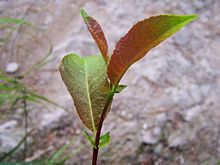
All the buds are lateral; no absolutely terminal bud is ever formed. The buds are covered by a single scale. Usually, the bud scale is fused into a cap-like shape, but in some species it wraps around and the edges overlap. The leaves are simple, feather-veined, and typically linear-lanceolate. Usually they are serrate, rounded at base, acute or acuminate. The leaf petioles are short, the stipules often very conspicuous, resembling tiny, round leaves, and sometimes remaining for half the summer. On some species, however, they are small, inconspicuous, and caducous.
Also Read:
- Do animal cells have lysosomes
- Is secondary transport active
- Smooth endoplasmic reticulum
- Plant cell functions
- Closed ecosystem
- Seed plant example
- Bacillus bacteria examples
- Bees characteristics
- Terrestrial biome examples
- Is chloroplast an enzyme
I am Ankita Chattopadhyay from Kharagpur. I have completed my B. Tech in Biotechnology from Amity University Kolkata. I am a Subject Matter Expert in Biotechnology. I have been keen in writing articles and also interested in Literature with having my writing published in a Biotech website and a book respectively. Along with these, I am also a Hodophile, a Cinephile and a foodie.